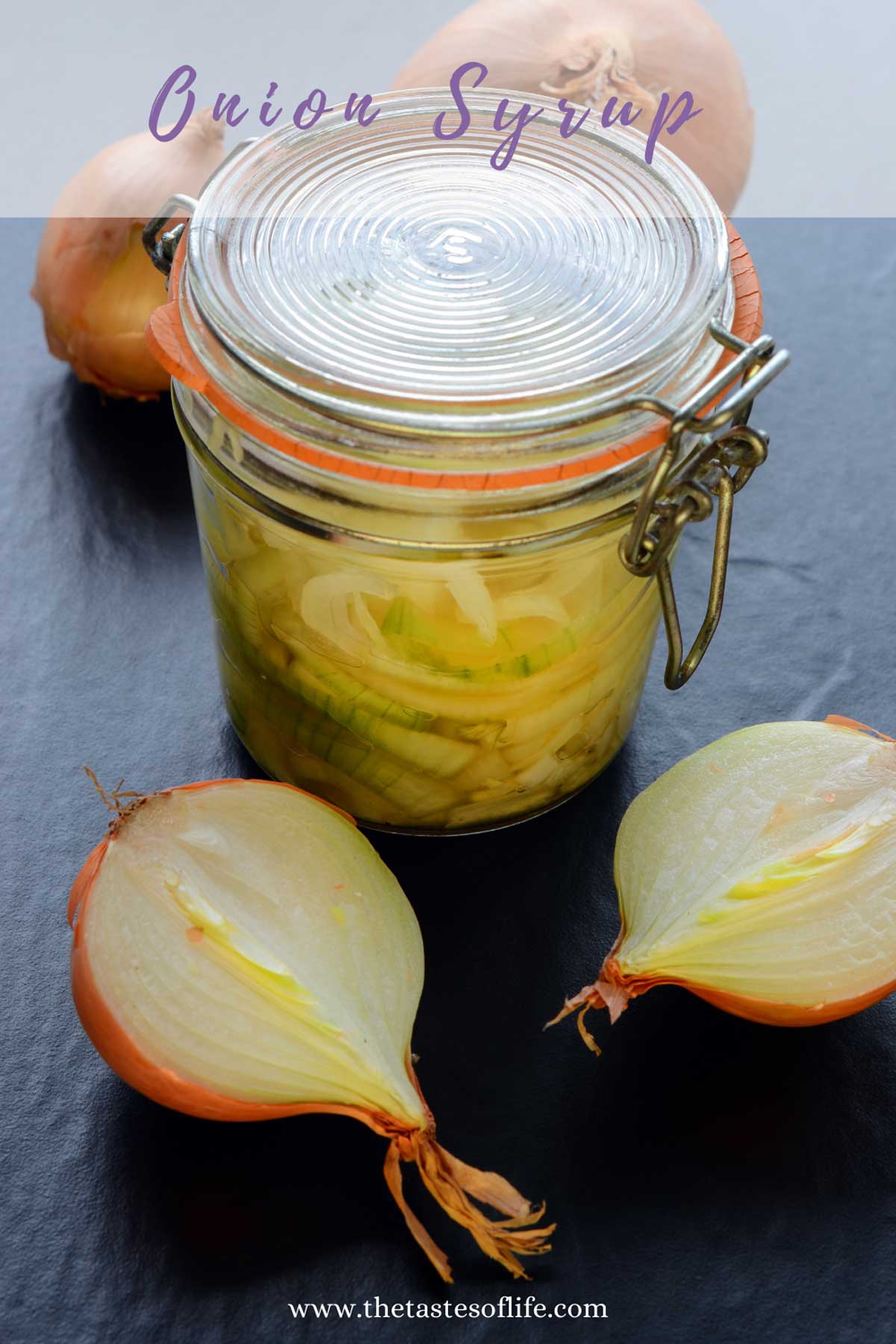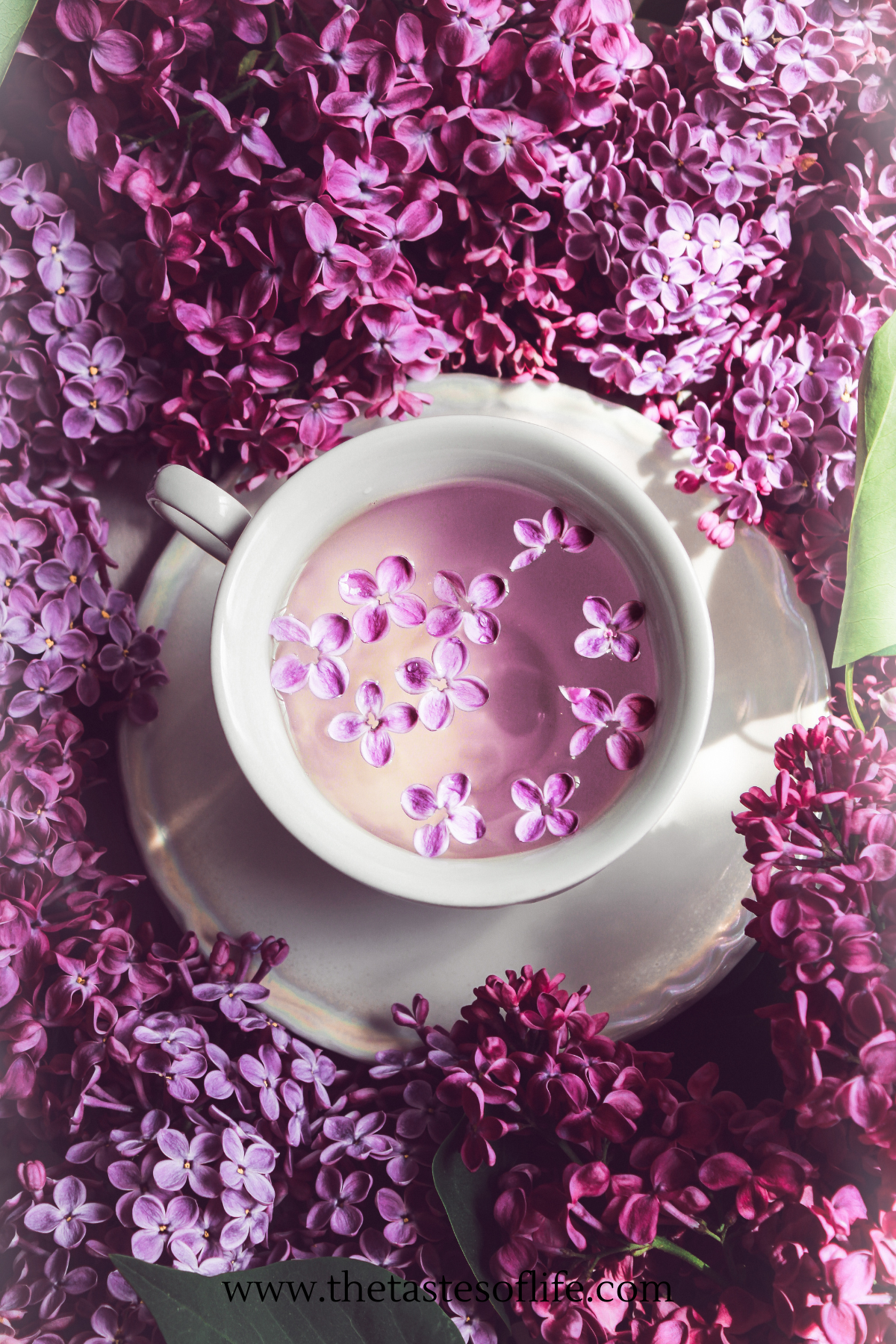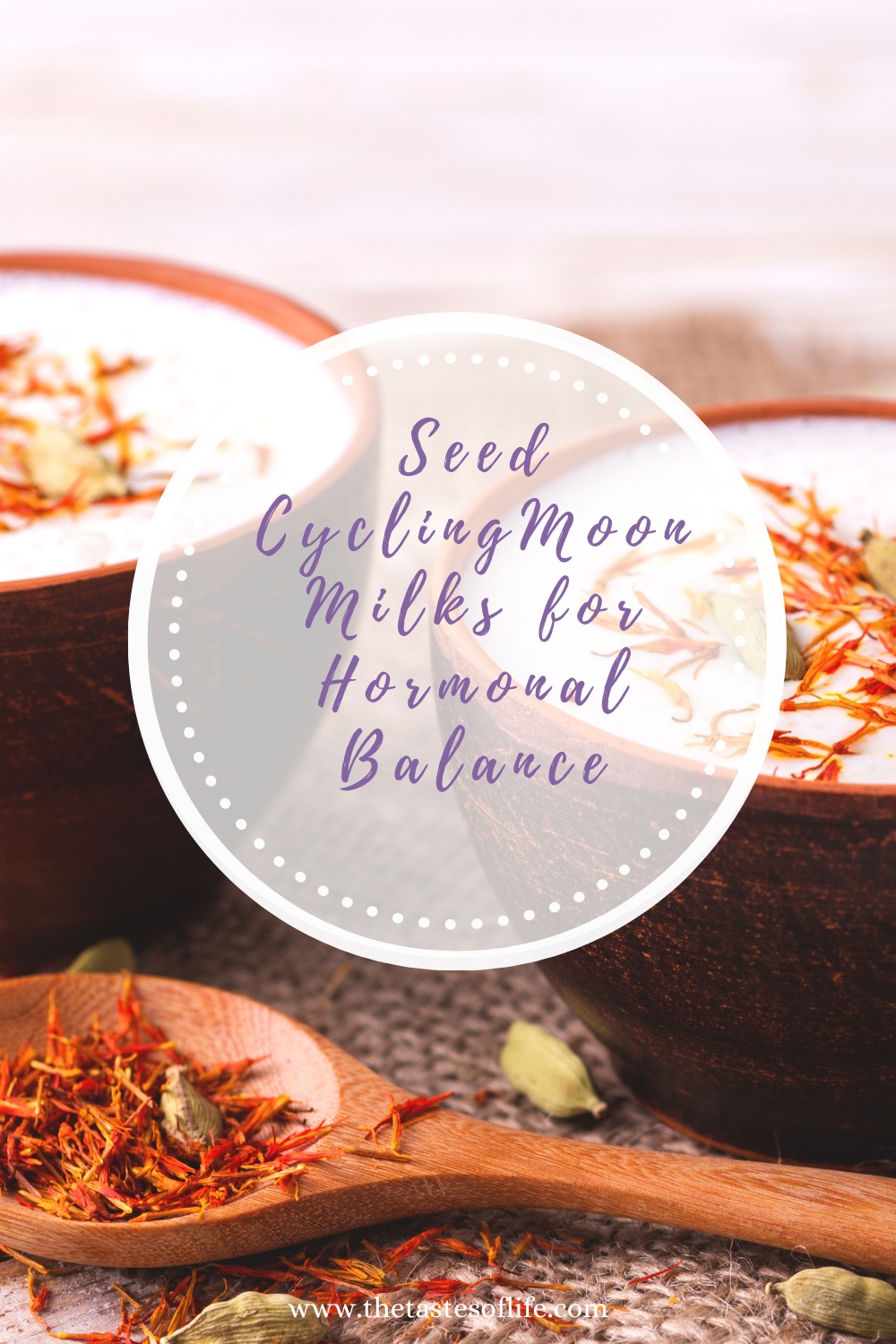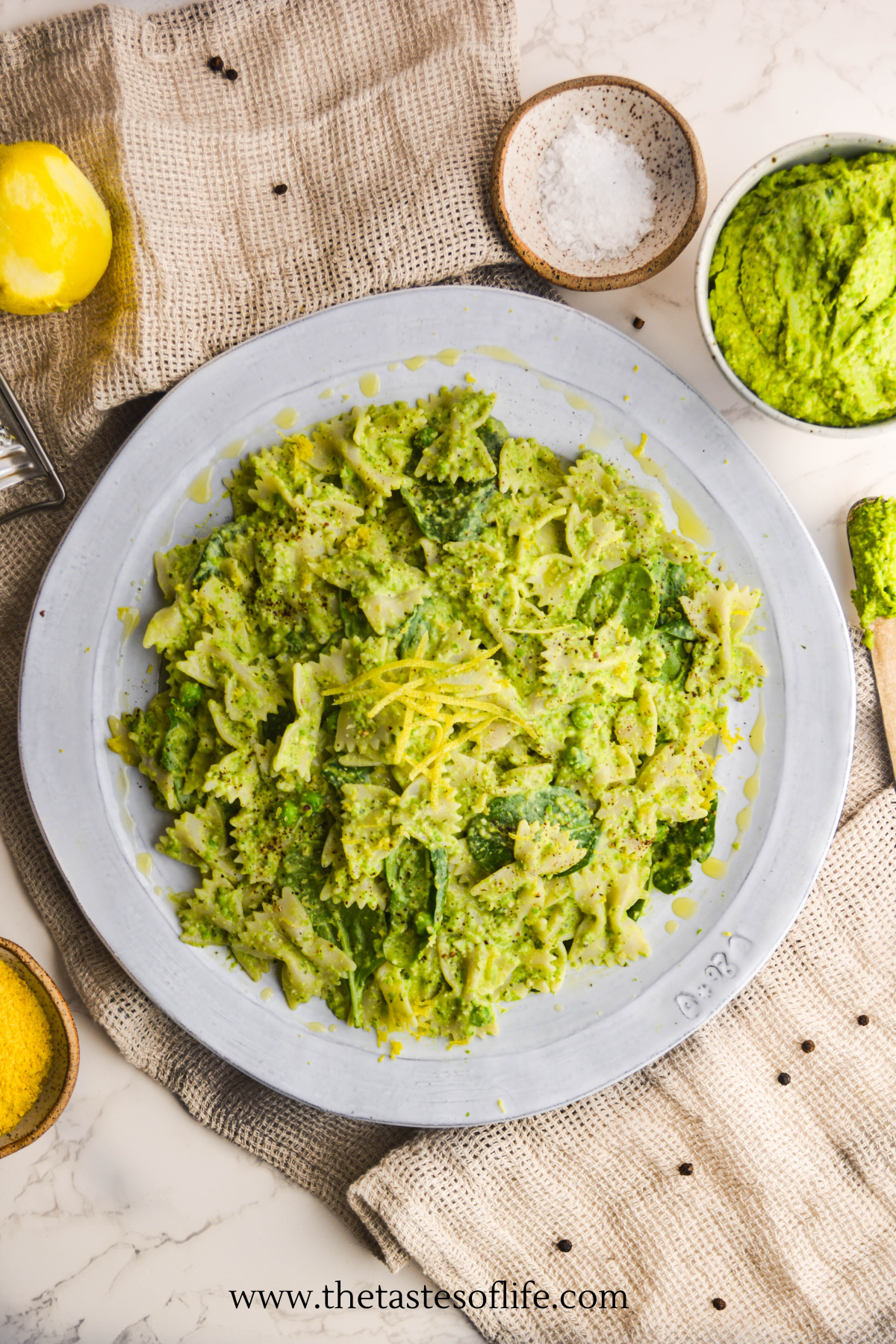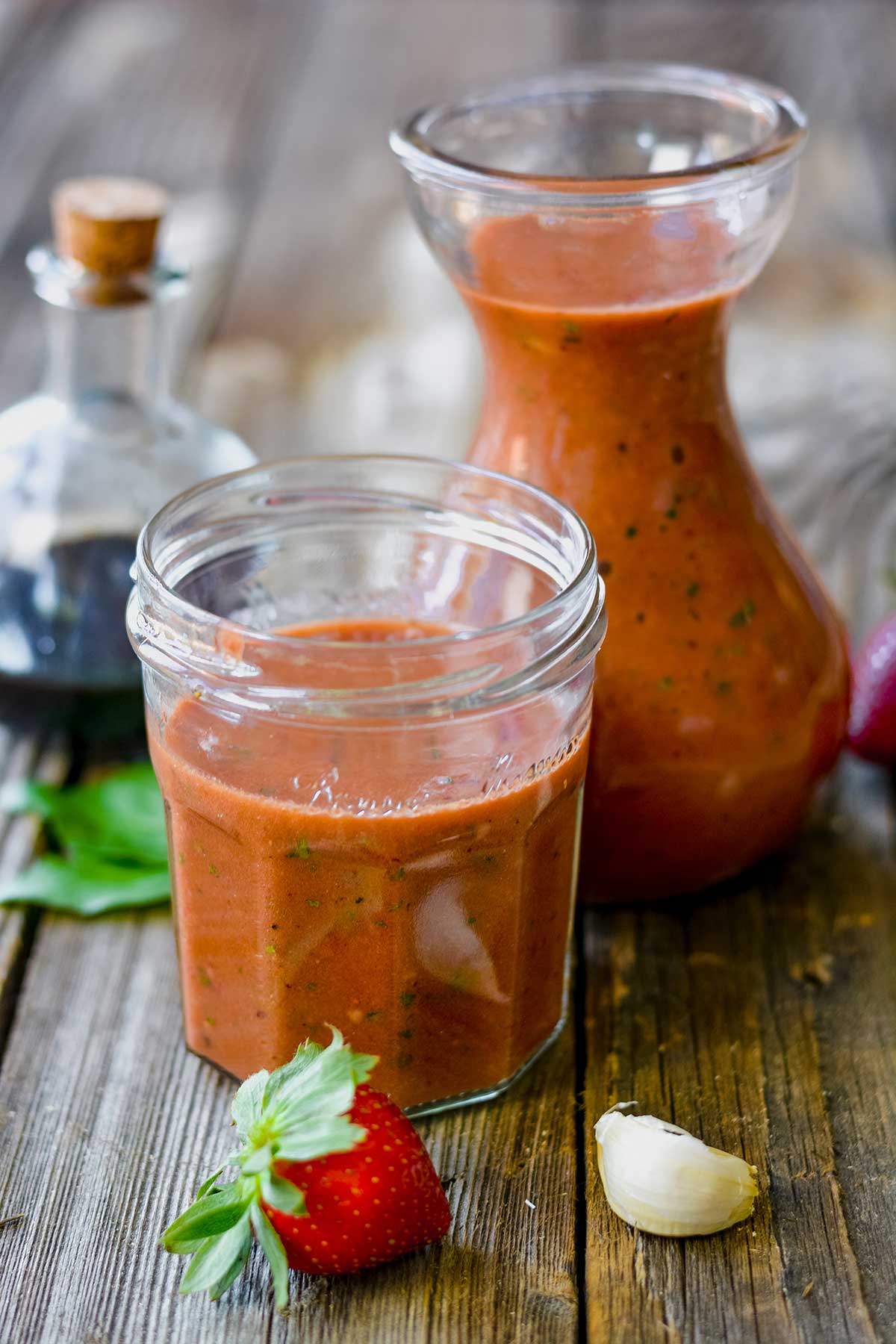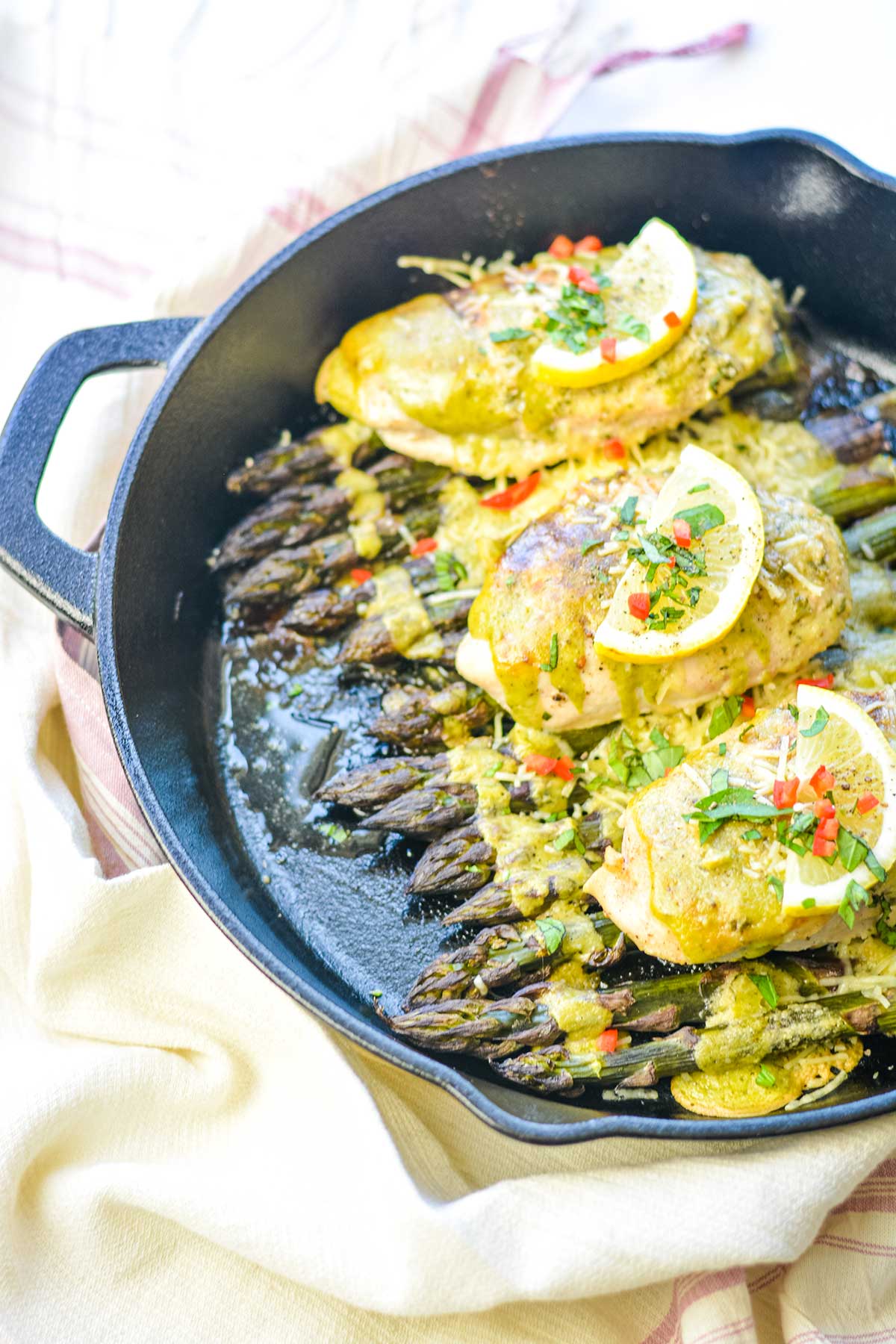Exploring the Health Benefits of Pine and Pine-Based Cough Syrup

Benefits of Pine
Pine is a robust and very adaptable tree. She can adapt to life on the open sands and the swamp. Not surprisingly, it has long been a symbol of health, longevity, bravery, victory, and fertility.
Pine is one of the most common trees in our climate. The multitude of its uses in herbal medicine, cosmetics, and healing cannot be overestimated. It is no accident that many treatment centers, hospitals, retreat centers, and sanatoriums (in Europe) were usually built where pine trees grow. Patients were recommended oxygenating walks in the coniferous forest, an excellent natural inhaler.
Conifers that grow in warm climates in the north, especially pine, have many healing powers. Being near pine trees has a healing effect on the respiratory, immune, and nervous systems. This is due to the fragrance of the resin and terpenes rich in essential oils.
Let’s delve into the fascinating world of pine and explore the health benefits it brings, especially in the context of soothing coughs.
- Rich in Antioxidants: Pine trees are a powerhouse of antioxidants, such as flavonoids and polyphenols, which play a crucial role in combating oxidative stress in the body. These antioxidants help neutralize harmful free radicals, potentially reducing the risk of chronic diseases and supporting overall health.
- Anti-Inflammatory Properties: Pine contains compounds like quercetin and shikimic acid known for their anti-inflammatory properties. In the context of coughs and respiratory issues, these properties can help alleviate inflammation in the airways, relieving symptoms and promoting easier breathing.
- Boosts Immune System: Pine is a rich source of vitamin C, a potent immune booster. A robust immune system is essential for warding off infections, including those that lead to coughs and colds. Regular consumption of pine-based products can contribute to overall immune health, potentially reducing the frequency and severity of respiratory illnesses.
- Expectorant Qualities: Pine-based cough syrups often contain natural expectorants that help loosen and expel mucus from the respiratory tract. This can be particularly beneficial for individuals suffering from chest congestion and persistent coughs, making it easier to breathe and promoting a quicker recovery.
- Soothing Effect on Respiratory Tract: The soothing properties of pine can have a calming effect on the respiratory tract. When formulated into cough syrups, pine can help relieve irritation, reduce coughing, and comfort individuals dealing with respiratory discomfort.
- Natural Decongestant: Pine has natural decongestant properties, effectively easing nasal congestion and sinus pressure. Pine-based cough syrups can thus offer relief for coughs and symptoms associated with the common cold or allergies.
- Calming Aromatherapy: Beyond its internal benefits, the aromatic essence of pine contributes to a calming and refreshing atmosphere. Inhaling the scent of pine can positively impact mental well-being, reducing stress and promoting relaxation, which can, in turn, support the body’s healing processes.
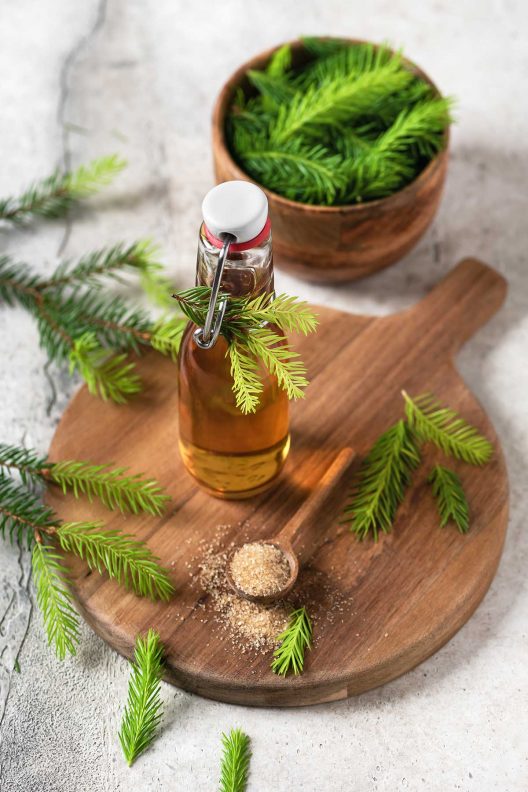
It provides vitamins, minerals, and many life-giving ingredients. Pine needles can easily compete with rosehips and blackcurrants regarding vitamin C content in winter. In the summer, there is a bit less vitamin C and more essential minerals, essential oils, bioflavonoids, and phytoestrogens.
In traditional Polish folk medicine, pine (and various parts of the pine tree) has been utilized for its medicinal properties for centuries. Here are some ways in which pine was commonly used in traditional Polish remedies:
- Pine Needle Tea:
- Infusions made from pine needles were a common remedy for respiratory issues. The tea was believed to have expectorant properties, helping to relieve coughs and congestion. It was often used during the winter months to support overall respiratory health.
- Pine Resin Salve:
- Pine resin, obtained from the bark or damaged areas of the tree, was used to create salves and ointments. These were applied topically to wounds, cuts, or skin irritations due to its antiseptic properties. Pine resin was thought to help prevent infections and promote healing.
- Steam Inhalation:
- Inhaling steam infused with pine needles or pine essential oil was a common practice for easing respiratory discomfort. This method was believed to help clear the airways and provide relief from conditions such as colds and bronchitis.
- Pine Bud Syrup:
- The buds of young pine shoots were often collected in spring and used to make syrups. These syrups were believed to have immune-boosting properties and were consumed to prevent or alleviate symptoms of respiratory infections.
- Pine Bark Infusions:
- Infusions made from pine bark were consumed for their potential anti-inflammatory properties. It was thought to be beneficial for conditions such as arthritis or joint pain.
- Pine Needle Baths:
- Pine needle baths were taken for their refreshing and invigorating effects. The aromatic steam from the baths was believed to positively impact both physical and mental well-being.
- Pine Bark Poultices:
- Poultices made from crushed pine bark were applied to sore muscles or joints. The anti-inflammatory properties of the pine bark were believed to help reduce pain and swelling.
- Pine Honey:
- Honey infused with pine needles or pine resin was a popular preparation. This sweet concoction was consumed for its potential health benefits, including soothing sore throats and supporting the immune system.
- Pine-infused Spirits:
- Some traditional remedies involved infusing spirits or alcohol with pine needles. These concoctions were believed to have warming properties and were used in moderation for various health concerns.
- Protection Against Evil Spirits:
- In folk beliefs, pine trees were sometimes associated with protection against evil spirits. Pine branches or needles were placed in homes or carried as a protective charm.
It’s important to note that while these traditional uses of pine in Polish folk medicine reflect historical practices, they are not a substitute for modern medical advice. Before trying any herbal remedy, especially for medicinal purposes, it’s advisable to consult with a healthcare professional to ensure safety and appropriateness for individual health conditions.
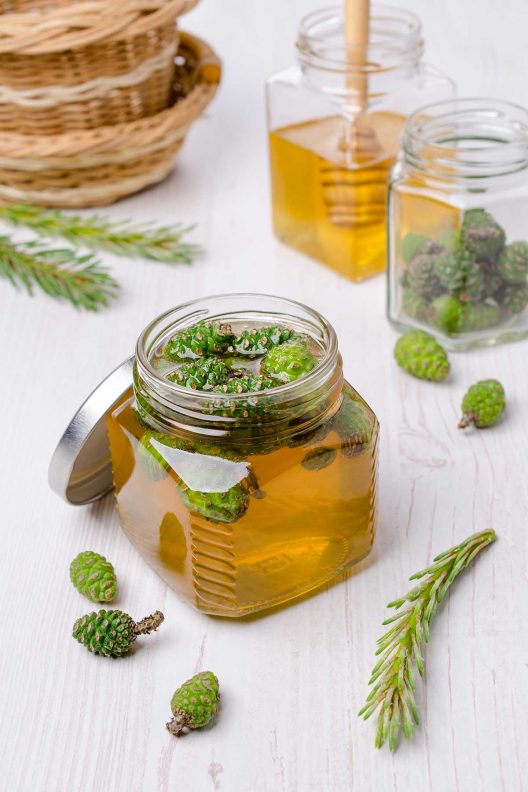
Pine Syrup
Pine syrup, traditionally made from the needles or buds of certain pine tree species, is believed to offer several potential health benefits, though it’s important to note that scientific research on the specific health effects of pine syrup is limited. Here are some potential health benefits associated with pine syrup:
- Rich in Antioxidants:
- Pine syrup may contain antioxidants, such as flavonoids and polyphenols, derived from pine needles or buds. Antioxidants help neutralize free radicals in the body, which can contribute to overall health and may reduce the risk of chronic diseases.
- Respiratory Health:
- Traditionally, pine syrup has been used to support respiratory health. The expectorant properties of pine may help in thinning and expelling mucus from the respiratory tract, potentially providing relief from coughs and congestion.
- Anti-Inflammatory Properties:
- Some compounds found in pine, including quercetin and shikimic acid, are known for their anti-inflammatory properties. Pine syrup may help reduce inflammation in the respiratory system and other parts of the body.
- Immune System Support:
- Pine syrup, especially if made from young pine buds, may contain compounds that support the immune system. This can be beneficial for overall immune health, potentially reducing the risk of infections.
- Soothing Effects:
- The aromatic qualities of pine syrup may have a soothing effect on the respiratory tract. Inhaling the natural scent of pine can contribute to a sense of calm and relaxation.
- Cough Relief:
- Due to its potential expectorant and soothing properties, pine syrup is often used as a natural remedy for cough relief. It may help ease coughing by addressing the underlying causes such as mucus buildup and irritation.
- Vitamin C Content:
- Some pine species, like Eastern white pine, contain vitamin C in their needles. Vitamin C is an essential nutrient known for its immune-boosting properties.
It’s important to approach the consumption of pine syrup with caution, especially if you have allergies, are pregnant, or are taking medications. While many people find natural remedies like pine syrup to be a part of their wellness routine, individual responses can vary.
The timing for making pine syrup traditionally depends on the specific cultural or regional practices and the syrup’s intended use. However, there are general guidelines for when pine syrup might be made:
- Spring:
- In many traditional practices, pine syrup is often made in the spring. This is a time when new growth, such as young pine shoots and needles, is abundant. The fresh, tender growth is believed to have a higher concentration of beneficial compounds.
- Early Summer:
- Some traditions may extend the window for making pine syrup into early summer. During this period, the weather is generally mild, and the trees continue to produce new growth.
- Harvesting Pine Buds:
- If the syrup is made using pine buds, they are often harvested in the early spring before they fully open. The buds contain concentrated compounds that are believed to have medicinal properties.
- Timing with Seasonal Changes:
- The timing might also coincide with specific seasonal changes or natural events that are considered significant in traditional practices. For example, some cultures may tie the making of herbal remedies like pine syrup to specific lunar phases or other natural cycles.
- Consideration of Local Climate:
- The timing can vary based on the local climate and the specific pine species being used. In areas with milder climates, the growth period for pine trees may be longer, allowing for a more extended period for harvesting.
- Avoid Harvesting During Stressful Conditions:
- It’s generally recommended to avoid harvesting from stressed or unhealthy trees. Extreme weather conditions, pollution, or other environmental stressors can affect the quality of the pine needles or buds.
If you are considering making pine syrup or any other herbal remedy, it’s advisable to do thorough research, ensure you have correctly identified the pine species you are using, and consult with experienced foragers or herbalists. Additionally, if you have any health concerns or are taking medications, consult with a healthcare professional before incorporating homemade remedies into your routine.
When considering the use of pine for medicinal or culinary purposes, it’s important to ensure that you are using a species of pine that is safe for consumption and suitable for your intended use. Different species of pine trees have varying properties, and not all are suitable for human consumption. Here are a few common types of pine that are generally considered safe:
- Eastern White Pine (Pinus strobus):
- Eastern white pine is one of the most common pine species in North America. Its needles are often used to make pine needle tea, and the inner bark has been historically used for various purposes.
- Scots Pine (Pinus sylvestris):
- Scots pine is native to Europe and Asia but has been introduced to other regions. It’s often used in traditional medicine, and its resin is used in some natural products.
- Ponderosa Pine (Pinus ponderosa):
- Ponderosa pine is found in western North America. Indigenous communities have traditionally used it, and its needles are sometimes used in herbal teas.
- Loblolly Pine (Pinus taeda):
- Loblolly pine is common in the southeastern United States. While it is primarily known for its timber, some traditional uses involve its needles and resin.
- Pine varieties used for pine nuts:
- Various pine species produce edible pine nuts, such as the stone pine (Pinus pinea), Korean pine (Pinus koraiensis), and others. Pine nuts are used in cooking and are generally safe for consumption.
Always exercise caution and ensure that the pine you are using is free from pesticides and other contaminants. Additionally, if you are unsure about the identification of a pine tree, it’s best to seek guidance from someone with expertise in botany or a local foraging expert.
Avoid using the following types of pine, as they are generally considered unsafe for consumption:
- Yew Pine (Podocarpus spp.):
- Despite its name, yew pine is not a true pine (Pinus) and is toxic. It should not be used for any culinary or medicinal purposes.
- Norfolk Island Pine (Araucaria heterophylla):
- Norfolk Island pine is not a true pine, and its needles are not suitable for consumption. It is commonly used as an ornamental plant.
- Monterey Pine (Pinus radiata):
- While Monterey pine is primarily used for timber, its needles and other parts are not typically used for culinary or medicinal purposes.
As with any natural remedy, it’s essential to use caution, especially if you have allergies, are pregnant, or are taking medications. Consult with a healthcare professional before incorporating pine or pine-based products into your diet or health regimen.
Pine can be a unique and flavorful addition to various recipes, adding a touch of forest essence to your dishes. Here are a few recipes that incorporate pine or pine-infused ingredients:
Pine Needle Tea:
Ingredients:
- 1 cup fresh pine needles (cleaned and rinsed)
- 3 cups water
- Honey or lemon for flavor (optional)
Instructions:
- In a pot, bring the water to a boil.
- Add the fresh pine needles to the boiling water.
- Let it simmer for about 10-15 minutes.
- Strain the tea to remove the pine needles.
- Add honey or lemon for flavor if desired.
- Enjoy a refreshing cup of tea!
Pine -infused Olive Oil
Ingredients:
- 1 cup extra-virgin olive oil
- 1/4 cup fresh pine needles
Instructions:
- Clean and dry the pine needles.
- In a small saucepan, heat the olive oil over low heat.
- Add the pine needles and let them infuse into the oil for about 15-20 minutes.
- Remove from heat and let it cool.
- Strain the oil to remove the pine needles.
- Use the pine-infused olive oil for salads or as a flavorful drizzle for roasted vegetables. Pine baths are not only soothing for the senses but are also believed to have potential health benefits, such as promoting respiratory health and reducing stress. Here’s how you can prepare a pine bath at home:
Pine Needle Bath Recipe:
Ingredients:
- 2 cups of fresh pine needles (cleaned and rinsed)
- 1/2 cup Epsom salt (optional for added relaxation)
- 1 cup sea salt or Himalayan salt
- A few drops of pine essential oil (optional for a more intense aroma)
- Hot water for your bath
Instructions:
- Harvest Pine Needles: Collect fresh pine needles from clean, pesticide-free areas. Ensure they are free from dirt and debris.
- Clean and Prepare Pine Needles: Rinse the pine needles thoroughly to remove any impurities. Pat them dry with a clean cloth.
- Combine Ingredients: In a large bowl, mix the fresh pine needles, Epsom salt (if using), sea salt, and a few drops of pine essential oil.
- Prepare Hot Bath: Fill your bathtub with hot water. Ensure the temperature is comfortable for you.
- Add Pine Mixture to Bath: Place the pine needle mixture directly into the hot water. Allow it to steep for a few minutes, releasing the aromatic properties of the pine.
- Optional: Create a Sachet: If you prefer, you can tie the pine needles in a muslin or cheesecloth sachet and hang it under the running tap as the bath fills.
- Soak and Relax: Step into the bath and soak for at least 15-20 minutes. Take deep breaths to inhale the refreshing scent of the pine.
- Exfoliate (Optional): You can use a handful of pine needles as a gentle exfoliant for your skin during the bath.
- Rinse and Moisturize: After your bath, rinse off with a quick shower to remove any residue. Pat your skin dry and apply your favorite moisturizer.
Tips:
- Ensure that you are not allergic to pine before trying this bath, especially if using fresh pine needles.
- Adjust the quantity of pine needles and essential oil based on your preference for the strength of the aroma.
- You can use pine essential oil if you don’t have access to fresh pine needles.
A pine bath can be a wonderful way to unwind, especially after a long day. The combination of warm water, aromatic pine, and soothing salts can create a therapeutic experience for both the body and mind.
Enjoy!Please let me know how it turned out for you! Leave a comment below and share a picture on Instagram with the hashtag #thetastesoflifeholisticblog
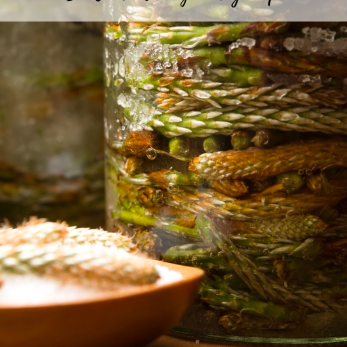
Ingredients
- 1 cup pine needles shoots
- 1 cup water
- 1 cup honey raw
- 2 lemons juiced
- cinnamon optional
- ginger optional
Instructions
- Harvest Pine Needles:Collect fresh pine needles from a healthy pine tree. Ensure they are free from pollutants and pesticides.
- Clean and Prepare:Rinse the pine needles thoroughly to remove any dirt or debris. Pat them dry with a clean cloth.
- Infusion:In a saucepan, bring 2 cups of distilled water to a simmer. Add the cleaned pine needles to the water.Allow the pine needles to simmer in the water for about 15-20 minutes. This process extracts the beneficial compounds from the pine.
- Combine Ingredients:In a clean bowl, mix the pine needle-infused water with 1 cup of raw honey. Stir well until the honey is completely dissolved.
- Optional: Add Spices:If desired, add a pinch of ginger or cinnamon to the syrup. These spices can contribute additional flavor and may have health benefits.
- Store:Pour the syrup into a clean, airtight glass jar or bottle. Store it in the refrigerator.
- Dosage:Adults: Take 1-2 tablespoons as needed for cough relief.Children (over 1 year): Consult with a pediatrician for an appropriate dosage.
- Note: This homemade cough syrup can be stored in the refrigerator for up to two weeks. If you experience any adverse reactions or if symptoms persist, consult with a healthcare professional. This remedy is not a substitute for professional medical advice and treatment.

